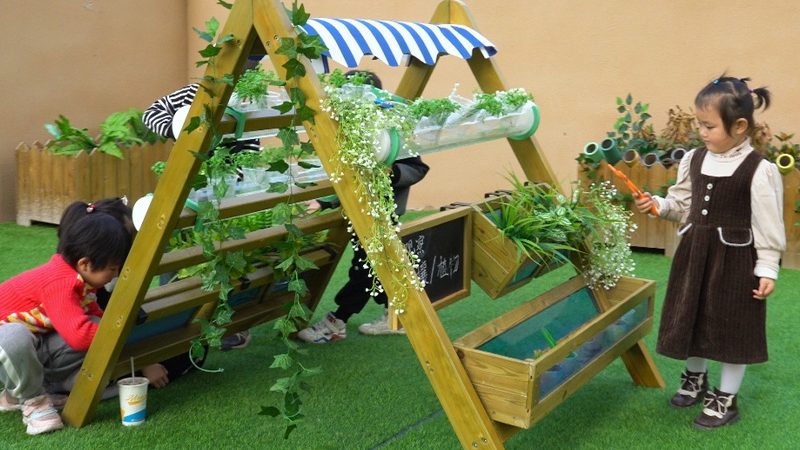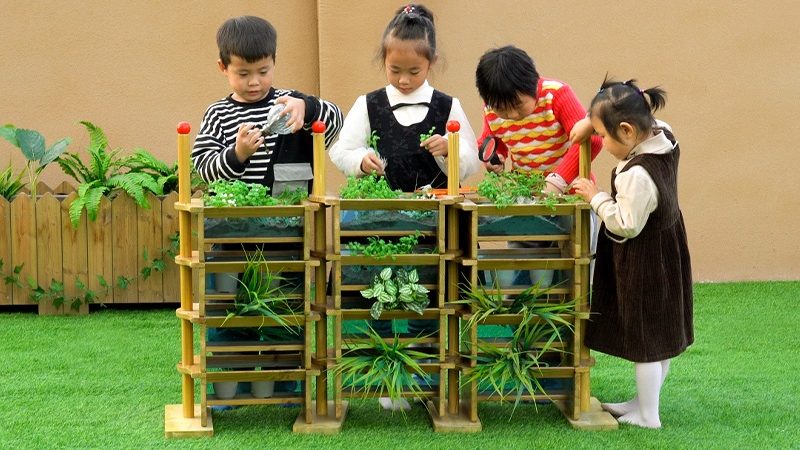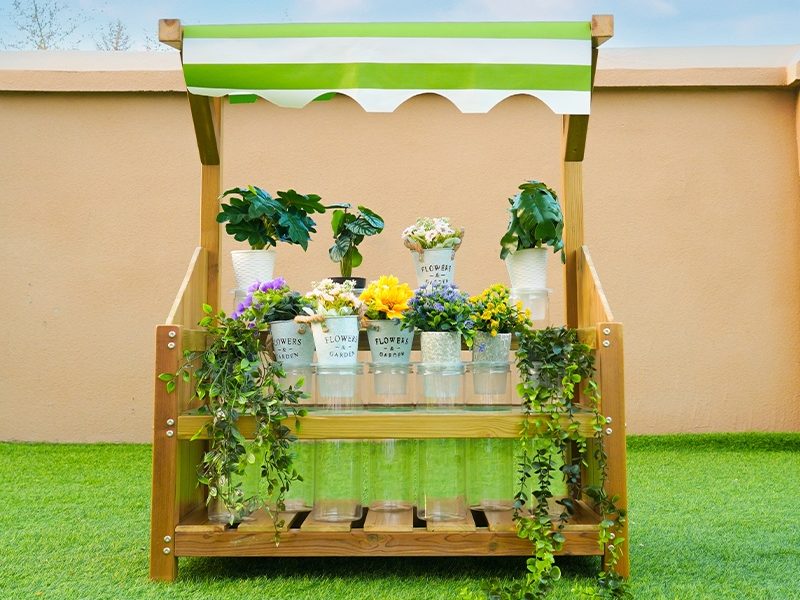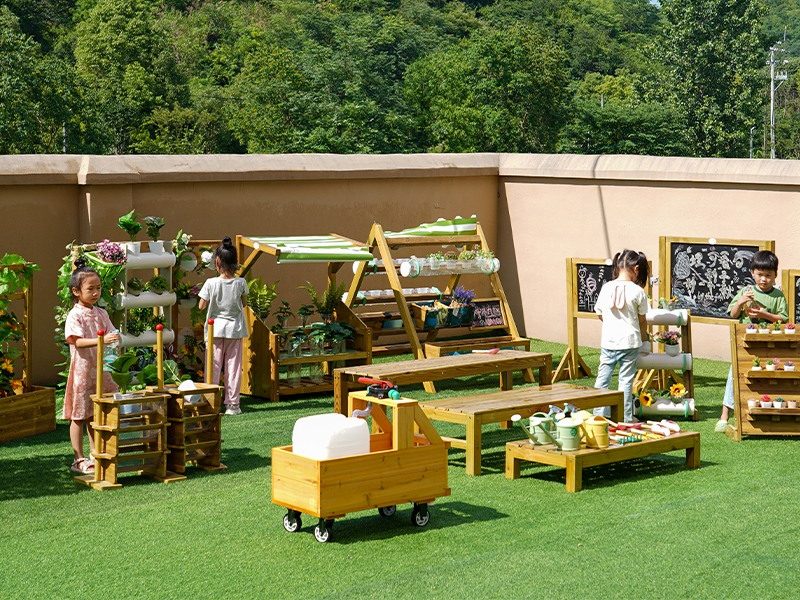TABLE OF CONTENTS
- Why Plant Activities Transform Early Education
- Essential Hands-On Learning Experiences
- Seed Germination Projects
- Life Cycle Exploration
- Sensory Garden Creation
- STEM-Focused Science Experiments
- Photosynthesis Demonstrations
- Water Transport Investigations
- Mathematics Through Natural Learning
- Literacy Development Strategies
- Daily Classroom Routines
- Outdoor Learning Extensions
- Choosing Quality Educational Materials
- Building Environmental Stewardship
Plant activities unlock magical learning moments that stay with children for life. For kindergartens and preschools worldwide, hands-on experiences with seeds, soil, and growing things create foundational scientific understanding while nurturing environmental awareness. These interactive learning opportunities teach far more than botany—they develop critical thinking, patience, responsibility, and a profound connection to the natural world.
When young learners touch soil, observe seedlings, and care for living organisms, education transcends textbooks. Research consistently shows that multi-sensory, experiential learning creates stronger neural connections and longer-lasting knowledge retention than traditional instruction methods. Plant activities deliver exactly this kind of transformative educational experience.
Why Plant Activities Transform Early Education
Educational institutions worldwide recognize that children learn best through direct engagement with their environment. Plant activities provide perfect vehicles for introducing scientific concepts, mathematical thinking, literacy development, and social-emotional growth—all wrapped in naturally fascinating experiences that captivate young minds.
The Science Behind Experiential Learning
Cognitive research demonstrates that children aged 3-7 years old learn primarily through concrete, manipulable experiences. Abstract concepts become accessible when linked to tangible objects and observable processes. Growing plants offers ideal contexts for understanding life cycles, cause-and-effect relationships, time progression, and biological needs.
When preschoolers plant seeds and watch them transform into seedlings, they’re not just learning botany. They’re developing:
- Observation skills through daily monitoring
- Patience and delayed gratification waiting for growth
- Responsibility through consistent plant care
- Scientific vocabulary describing parts and processes
- Sequential thinking understanding growth stages
- Empathy caring for living things
These foundational capabilities serve children throughout their educational journeys and lives.
Environmental Awareness Begins Early
Climate change, habitat loss, and environmental sustainability represent critical challenges for future generations. Introducing plant activities in early childhood education plants seeds—quite literally—of environmental stewardship. Children who grow plants develop respect for living things, understanding of ecological interconnections, and motivation to protect natural environments.
Quality educational programs recognize this opportunity and integrate comprehensive plant activities into their curricula, creating lifelong environmental advocates.
Essential Hands-On Plant Activities for Kindergarten and Preschool
Successful plant activities balance educational objectives with age-appropriate engagement. The following experiences have proven consistently effective across diverse educational settings worldwide.
Seed Germination Observation Projects

Nothing captivates young scientists quite like watching seeds transform into plants. Germination observation projects teach patience while demonstrating miraculous biological processes. This foundational plant activity introduces scientific method, hypothesis testing, and systematic observation.
Implementation Strategy:
Start with fast-growing seeds like beans, sunflowers, or radishes. These varieties show visible changes within days, maintaining student engagement. Use transparent containers—glass jars, clear plastic cups, or specialized wooden observation boxes with clear windows—so children can observe root development alongside shoot growth.
Create observation journals where students draw daily or weekly progress. Provide wooden pencils, recycled paper journals, and simple templates for recording observations. Encourage descriptive language: “The root is as long as my finger” or “The leaves feel soft like fabric.”
Incorporate measurement activities as plants grow. Supply wooden rulers marked with large, clear increments. Students measure seedling height, count leaves, and track days until flowering. These mathematical connections reinforce measurement concepts while maintaining focus on biological wonder.
Learning Outcomes:
- Understanding seed structure (seed coat, embryo, stored food)
- Recognizing growth requires time and proper conditions
- Developing vocabulary (germinate, sprout, seedling, root, shoot)
- Practicing systematic observation and recording
- Building patience and delayed gratification tolerance
Plant Life Cycle Exploration Activities
Understanding sequential processes represents crucial cognitive development for young children. The plant life cycle—from seed to seedling to mature plant to flower to seed production—offers perfect complexity for kindergarten and preschool learners.
Interactive Learning Materials:
Quality wooden educational toys designed specifically for life cycle teaching transform abstract concepts into manipulable experiences.Seed puzzles, sorting activities, and sequencing cards help children grasp temporal progression and biological stages.
Wooden sorting trays with compartments for each lifecycle stage allow students to place corresponding objects—actual seeds, seedling photos, flower samples, and seed pods—creating tangible timelines. These durable materials withstand enthusiastic young hands while maintaining professional appearance year after year.
Activity Variations:
- Lifecycle Sequencing Games: Students arrange photo cards or wooden pieces showing growth stages in correct order
- Lifecycle Movement Activity: Children physically act out being seeds, sprouting, growing, flowering, and producing new seeds
- Lifecycle Wheels: Rotating wooden wheels show continuous cycle nature, helping children understand regeneration
- Comparative Lifecycle Studies: Examine how different plants (beans vs. sunflowers vs. trees) have varying timeframes and stages
These activities develop sequential thinking, temporal awareness, and biological understanding while encouraging collaborative learning and discussion.
Sensory Garden Creation Projects

Sensory gardens transform ordinary outdoor spaces into vibrant, multi-dimensional learning laboratories. These specialized gardens feature plants selected for diverse textures, scents, colors, sounds (rustling leaves), and even safe taste experiences.
Plant Selection for Sensory Gardens:
- Touch: Lamb’s ear (soft), cactus (carefully supervised spiky), fuzzy sage, smooth jade plants
- Smell: Mint, basil, lavender, rosemary, scented geraniums
- Sight: Rainbow chard, purple cabbage, bright marigolds, variegated leaves
- Sound: Bamboo, ornamental grasses that rustle, poppy seed pods that rattle
- Taste: Cherry tomatoes, snap peas, strawberries, herbs (with proper supervision)
Implementation with Quality Materials:
Wooden planting boxes, child-sized garden tool sets, and plant markers enhance authentic gardening experiences. Natural materials align with garden themes while teaching proper tool use and care. Durable wooden tools withstand outdoor conditions, frequent use, and inevitable dropping without breaking or deteriorating.
Create dedicated sensory exploration stations within gardens. Wooden pergolas, benches, and observation platforms provide comfortable spaces for close examination, sketching, and quiet reflection.
Learning Extensions:
Connect sensory garden experiences to multiple curriculum areas:
- Science: Plant identification, growth requirements, seasonal changes
- Language Arts: Descriptive writing, sensory poetry, plant journals
- Mathematics: Measurement, counting (leaves, flowers, seeds), pattern recognition
- Social Studies: Cultural plant uses, global gardening practices
- Art: Botanical illustration, natural dye making, flower pressing
STEM-Focused Plant Science Experiments
Science, Technology, Engineering, and Mathematics (STEM) education begins in early childhood. Plant activities provide authentic contexts for introducing scientific thinking, hypothesis testing, and systematic investigation.
Photosynthesis Demonstration Activities
Even preschoolers can grasp fundamental photosynthesis concepts through carefully designed experiments. While detailed biochemistry remains beyond early childhood scope, understanding that plants need sunlight to stay healthy and grow strong introduces crucial biological concepts.
Simple Photosynthesis Experiment:
Place two identical plants in different locations—one near a sunny window, one in a dark closet. Students predict what will happen, then observe over several days. The contrast becomes dramatically obvious: the sun-exposed plant thrives while the closeted plant yellows and weakens.
Enhanced Learning Setup:
Wooden experiment stations with adjustable components allow teachers to create controlled environments. These stations might include:
- Clearly labeled plant positions
- Light meter indicators (simple visual representations)
- Daily observation recording sheets on clipboards
- Photo documentation stations
- Comparison charts showing side-by-side growth
Students develop hypothesis-testing skills: “I think the plant needs sun because…” They learn to record observations systematically: “Day 3: The plant by the window has bright green leaves. The plant in the closet has pale yellow leaves.”
Water Transport Investigations

The classic colored-water celery experiment remains popular because it makes invisible biological processes visible and understandable. Children observe colored water traveling through celery stems, turning white celery blue, red, or green—dramatic evidence of water transport in plants.
Experiment Procedure:
- Trim fresh celery stalks cleanly at bottom
- Place in clear containers with water mixed with food coloring
- Wait 4-24 hours depending on desired color intensity
- Observe and discuss color changes in stalks and leaves
- Cross-section stalks to see colored vascular bundles
Educational Enhancement:
Wooden specimen holders, magnifying glasses with wooden frames, and organized observation stations make this experiment feel scientific and important. Quality materials signal to children that their investigations matter and deserve proper tools.
Extend learning by trying different:
- Colored water intensities
- Plant types (white flowers absorb color beautifully)
- Wait times
- Water temperatures
- Adding variables (salt water, sugar water, plain water comparison)
Learning Outcomes:
- Understanding plants absorb water through roots/stems
- Introducing vascular system concepts
- Developing experimental design thinking
- Practicing prediction and observation skills
- Learning scientific vocabulary (vascular, transport, absorption)
Mathematics Through Natural Learning
Plant activities provide authentic contexts for mathematical thinking. Rather than abstract number manipulation, children apply mathematics to real, meaningful questions.
Measurement and Graphing Growth
Plant growth offers perfect real-world contexts for mathematical learning. Students measure seedling height daily or weekly, record data, and create growth charts. These activities introduce graphing, number sequencing, and basic statistics meaningfully.
- Daily Measurements: Students use wooden rulers to measure plant height, recording in journals
- Growth Graphs: Plot measurements on large wall charts, showing progress over time
- Comparative Analysis: Which plant grew tallest? Fastest? By how much?
- Prediction: Based on current growth, how tall will plants be next week?
Quality Mathematical Tools:
Wooden measuring sticks with clear, large increment markings make measurement accessible to young learners. Data recording stations with clipboard holders, pencil storage, and graph templates create organized mathematical workspaces.
Learning Outcomes:
- Understanding measurement units (inches, centimeters)
- Practicing counting and number recognition
- Creating and interpreting simple graphs
- Making predictions based on patterns
- Comparing quantities (taller, shorter, same height)
Counting, Sorting, and Pattern Recognition
Seeds offer excellent natural manipulatives for foundational mathematical skills. Children sort seeds by size, color, and type, then count and create patterns using these interesting, authentic objects.
Seed Mathematics Activities:
- Sorting: Categorize mixed seeds by observable characteristics
- Counting: How many seeds in each category?
- Pattern Making: Create ABAB patterns using different seed types
- Estimation: Guess seed numbers before counting
- Addition/Subtraction: Combining or removing seed groups
Quality Materials:
Wooden sorting trays with multiple compartments provide organized frameworks for mathematical exploration. These trays might have 4, 6, 8, or more sections, allowing increasingly complex categorization as children’s skills develop.
Literacy Development Through Plant Themes
Literacy development thrives when connected to meaningful, interesting contexts. Plant themes provide rich vocabulary, engaging narratives, and authentic writing purposes.
Plant-Themed Writing Centers
Dedicated writing centers with plant themes encourage literacy development through purposeful contexts. Children write plant observation journals, create seed packet labels, compose plant care instructions, and invent botanical stories.
Writing Center Components:
- Various paper types (lined, plain, shaped like leaves/flowers)
- Writing implements (pencils, crayons, markers)
- Wooden letter stamps for labeling
- Plant vocabulary word cards
- Botanical stationery and envelopes
- Display boards for finished writing
Writing Activity Ideas:
- Observation Journals: Daily or weekly plant growth descriptions
- How-To Writing: Plant care instruction creation
- Labeling: Seed packet design, plant marker production
- Poetry: Acrostic poems using plant vocabulary
- Narrative Stories: Adventures from a seed’s perspective
- Opinion Writing: Favorite plant or flower, with reasons
Quality materials signal to children that their writing matters and deserves proper tools. Wooden letter stamps, natural paper products, and botanical-themed stationery create inviting, purposeful writing environments.
Plant Life Cycle Storytelling

Narrative structures help children organize and remember information. Creating stories about seeds’ journeys—from planting through germination, growth, flowering, and seed production—combines literacy development with science content.
Storytelling Approaches:
- Puppet Shows: Students create and perform stories using plant character puppets
- Story Sequencing: Arrange picture cards showing lifecycle stages, narrate the sequence
- Creative Writing: “If I were a seed…” imaginative narratives
- Collective Stories: Class collaboratively creates ongoing plant adventure tale
- Illustrated Books: Students write and illustrate individual plant lifecycle books
Wooden story sequencing cards, puppet theaters, and character sets create comprehensive literacy-rich environments. These materials encourage repeated use, collaborative storytelling, and creative expression while reinforcing scientific understanding.
Establishing Daily Classroom Plant Care Routines
Consistent plant care responsibilities teach accountability, routine, and empathy for living things. These daily activities create structure while building essential life skills.
Plant Maintenance Responsibilities
Assigning rotating plant care responsibilities ensures all students participate while preventing individual burden. Create clear, visual job charts showing daily tasks:
- Waterers: Check soil moisture, water as needed
- Observers: Note and record plant changes
- Measurers: Track growth weekly
- Cleaners: Remove dead leaves, wipe dust from leaves
- Reporters: Share observations during group time
Age-Appropriate Tools:
Wooden watering cans with manageable weight when filled make watering achievable for small hands. Wooden plant care tool sets—mini rakes, small shovels, gentle brushes—allow proper maintenance without damage.
Responsibility Charts:
Visual job rotation charts help children understand expectations and anticipate their upcoming roles. Use wooden rotating wheels or pocket charts with student name cards and plant care icons.
Seasonal Planting Calendars
Understanding seasonal cycles connects children to natural rhythms and long-term planning. Creating planting calendars helps students anticipate future activities, understand timing relationships, and develop temporal awareness.
Calendar Activities:
- Seasonal Wheel Creation: Large wooden or laminated wheel divided into four seasons, showing optimal planting times
- Monthly Planting Plans: Decide which plants to start each month
- Growth Timeline Predictions: Calculate expected harvest dates
- Weather Tracking: Connect seasonal weather to plant growth patterns
Wooden seasonal wheels, month markers, weather tracking tools, and large calendar displays make abstract time concepts concrete and manipulable. Visual, tactile learning tools accommodate diverse learning styles effectively.
Outdoor Learning Extension Activities
While classroom plant activities provide foundational experiences, extending learning outdoors deepens connections to natural environments and real-world applications.
School Garden Development Projects
Transforming outdoor spaces into learning gardens extends classroom lessons into authentic environments. Students participate in comprehensive processes: garden planning, soil preparation, planting, maintenance, observation, and harvest.
Garden Development Steps:
- Planning Phase: Students help decide location, size, plant selection
- Preparation: Soil testing, bed building, tool organization
- Planting: Sowing seeds, transplanting seedlings
- Maintenance: Regular watering, weeding, pest management
- Harvesting: Collecting vegetables, herbs, flowers
- Reflection: Discussing successes, challenges, improvements for next season
Infrastructure Materials:
Durable wooden raised beds, garden borders, tool storage sheds, and signage create permanent learning infrastructure. Quality outdoor materials demonstrate institutional commitment to environmental education and experiential learning.
Raised bed gardens offer particular advantages:
- Accessibility: Appropriate height for young children
- Soil Control: Fill with optimal growing medium
- Drainage: Better water management than ground planting
- Organization: Clear boundaries between planting areas
- Longevity: Properly built wooden beds last decades
Nature Walk Documentation Activities
Guided nature walks where children document observed plants develop observation skills, botanical knowledge, and environmental awareness. Students sketch plants, collect fallen specimens (never pick living plants without permission), identify species, and note seasonal changes.
Documentation Tools:
- Wooden specimen collection boxes with dividers
- Clipboards with field journals
- Portable plant identification guides
- Wooden measurement rulers
- Digital cameras for photography (optional)
- Sketch pencils and colored pencils
Walk Activities:
- Scavenger Hunts: Find plants matching specific criteria (three leaves, red flowers, rough bark)
- Species Counting: How many different plant types can we find?
- Seasonal Comparisons: Visit same location across seasons, compare observations
- Habitat Studies: Notice which plants grow in sunny vs. shady areas
- Art Connection: Sketch interesting plants, create nature journals

Choosing Quality Educational Materials for Plant Activities
Material selection profoundly impacts educational outcomes, program longevity, and environmental footprints. When establishing comprehensive plant activity programs, invest in quality wooden educational tools and materials that support learning while lasting for years.
Why Wooden Educational Materials Excel
Wooden toys and tools offer numerous advantages over plastic alternatives:
Educational Benefits:
- Natural Aesthetics: Beautiful, calming appearance enhances learning environments
- Authentic Feel: Real wood textures provide genuine sensory experiences
- Appropriate Weight: Substantial but manageable for small hands
- Durability: Withstands years of enthusiastic young learners
- Timelessness: Classic designs don’t become outdated
Environmental Advantages:
- Sustainability: Renewable resource when responsibly sourced
- Biodegradability: Eventually returns to earth without harm
- Low Toxicity: Natural materials without harmful chemicals
- Longevity: Reduces replacement frequency and waste
- Carbon Storage: Wood products sequester carbon long-term
Practical Considerations:
- Cleanability: Simple soap and water cleaning suffices
- Repairability: Minor damage easily fixed
- Safety: No sharp edges, non-splintering finishes
- Professional Appearance: Maintains dignity, doesn’t look cheap
Selecting Reliable Suppliers
When evaluating educational material suppliers for plant activities and wooden toys, consider multiple factors ensuring long-term satisfaction:
- Safety certifications (ASTM, EN71, or equivalent)
- Sustainable wood sourcing (FSC certification)
- Non-toxic finishes and paints
- Detailed product descriptions
- Clear age recommendations
- Warranty or replacement policies
Service Factors:
- Responsive customer support
- Bulk pricing for institutions
- International shipping capabilities
- Replacement part availability
- Product customization options
- Educational resource provision
Institutional Considerations:
- Purchase order acceptance
- Volume discounts
- Coordinated product lines
- Long-term availability
- Consistent quality across orders
Building Long-Term Educational Partnerships
Successful educational institutions develop relationships with reliable suppliers rather than making one-time purchases. These partnerships ensure consistent quality, responsive service, and mutual understanding of educational needs.
Benefits of supplier partnerships include:
- Priority service and expedited shipping
- Early access to new products
- Custom product development opportunities
- Volume pricing advantages
- Dedicated account management
- Educational consultation services
For kindergartens and preschools planning comprehensive plant activity programs, partnering with specialized wooden educational toy manufacturers creates access to coordinated materials working together cohesively across multiple learning domains.
Building Environmental Stewardship Through Plant Activities
The ultimate goal of comprehensive plant activity programs extends beyond botanical knowledge. We’re cultivating future environmental stewards who understand, appreciate, and protect natural world.
Fostering Lifelong Environmental Values
Early childhood represents a critical window for developing environmental attitudes and behaviors. Positive, engaging experiences with plants during these formative years establish foundations for lifelong environmental consciousness.
Value Development Strategies:
- Direct Experience: Regular, positive interactions with plants and nature
- Responsibility: Caring for living things develops empathy and accountability
- Success: Watching plants thrive through one’s care builds efficacy beliefs
- Knowledge: Understanding plants’ importance in ecosystems motivates protection
- Connection: Emotional bonds with nature inspire conservation action
Long-Term Outcomes:
Students who participate in comprehensive plant activities programs demonstrate:
- Greater environmental knowledge
- Stronger pro-environmental attitudes
- Increased environmental behaviors
- Higher environmental self-efficacy
- Deeper nature connection
These outcomes predict environmental activism, sustainable lifestyle choices, and ecological citizenship in adulthood.
Creating Sustainable School Cultures
Plant activity programs extend beyond individual classrooms. Schools implementing comprehensive environmental education through plant studies create institutional cultures valuing sustainability and environmental responsibility.
School-Wide Integration:
- Campus Gardens: Permanent growing spaces accessible to all students
- Composting Systems: Turning lunch scraps into garden nutrients
- Rainwater Harvesting: Using captured water for garden irrigation
- Native Plantings: Landscaping with indigenous species supporting local ecosystems
- Environmental Service Projects: Community involvement in environmental protection
Conclusion: Growing Future Environmental Stewards
Comprehensive plant activities transform early childhood education by authentically connecting children with natural world. Through carefully designed hands-on experiences using quality educational materials, teachers cultivate scientific thinking, environmental awareness, and lifelong learning attitudes that serve children throughout their lives.
Successful plant activity programs share common characteristics:
Educational Excellence:
- Aligned with developmental appropriateness
- Integrated across multiple domains (science, math, literacy, arts)
- Based on research-backed pedagogical practices
- Assessed through authentic, ongoing methods
- Adapted to diverse learning needs and styles
Environmental Consciousness:
- Utilize sustainable, eco-friendly materials
- Model environmental responsibility
- Foster respect for living things
- Connect classroom learning to real-world ecosystems
- Build long-term environmental stewardship
Quality Materials:
- Invest in durable wooden educational tools
- Choose suppliers committed to sustainability and quality
- Maintain materials properly ensuring longevity
- Replace worn items with equivalent quality
- Model responsible consumption and care
Whether you’re establishing new plant activity programs or enhancing existing initiatives, investing in quality wooden educational materials demonstrates commitment to excellence in early childhood education. These timeless resources serve multiple student generations while promoting environmental responsibility and educational effectiveness.
The seeds we plant today—both literal and figurative—grow into tomorrow’s environmentally conscious, scientifically literate, caring citizens. By providing young children with meaningful plant activities supported by quality educational materials, we’re not just teaching botany. We’re nurturing respect for life, responsibility for our environment, and curiosity about the natural world.
Ready to enhance your educational programs with quality wooden materials for plant activities? Partner with manufacturers committed to sustainability, educational excellence, and long-term institutional support. Your students, teachers, and planet will benefit from this investment in authentic, meaningful environmental education.